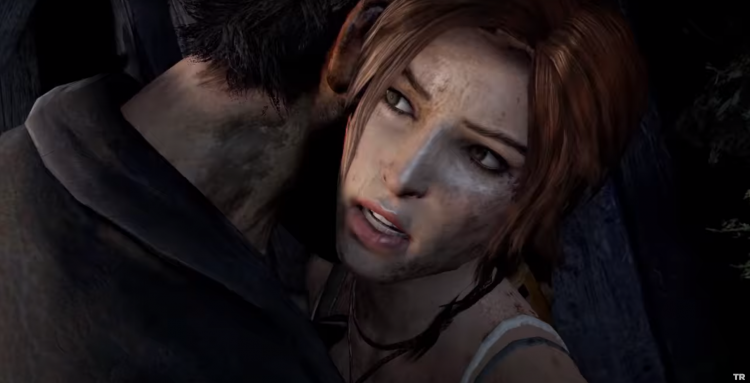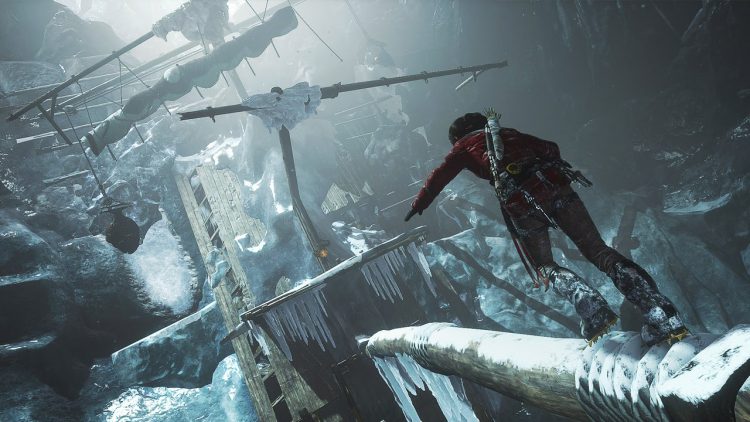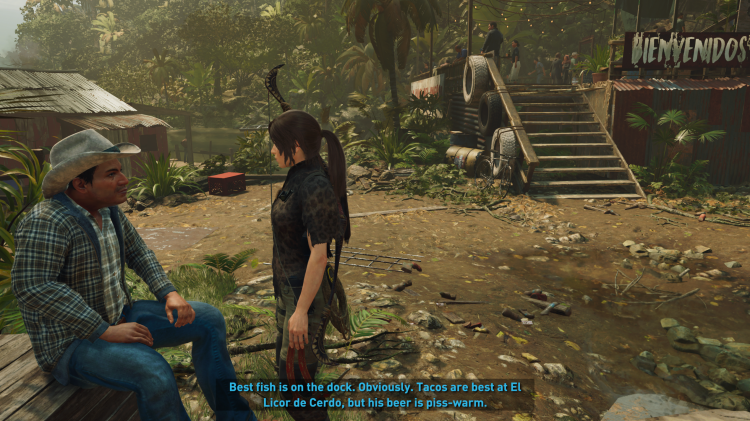Did you remember a Tomb Raider game came out in late 2018?
Shadow of the Tomb Raider was the third and almost certainly final game in the Crystal Dynamics/Eidos Montreal reboot of the classic action-adventure franchise, and the game seemed to simply…come and go. Publisher Square Enix acknowledged on an earnings call a few months after the game’s release that it had been unfortunate for it to launch the same month as the Sony PS4 exclusive Spider-man, but if your PC/Xbox/PS4 title gets significant attention sapped by someone’s console exclusive, perhaps the energy wasn’t there in the first place. More telling was their belief that the game simply wasn’t “novel” enough, and didn’t challenge player expectations or spark player imaginations.
That, at the core, has been the problem with the rebooted Tomb Raider franchise from the get-go, especially after a key misstep in the first game’s marketing cycle set the tone for how Crystal Dynamics and Eidos Montreal would develop the next two.
Let’s go back all the way to June 2012, back when we had things like “E3.” It was at this year’s Electronic Entertainment Expo that the team behind the much-anticipated reboot of Tomb Raider showed off their first big gameplay and story trailer packages and began hitting all the promotional beats for the game, which was scheduled for a Q1 release the next year. As the reboot story was the story of a young, dispossessed but somewhat sheltered British teenager being shipwrecked on a dangerous island and turning herself from a posh ingenue into Lara Croft, Tomb Raider, the team was eager to communicate how hard-hitting, gritty, and rough the game would be…and so executive producer Ron Rosenberg told Kotaku that, since this wasn’t your daddy’s Tomb Raider title, Lara would be made to “suffer,” so that players would want to “protect” her and “root for her in ways [they] might not root for a male character.” If that last bit sounds like an utterly bizarre turn of phrase, Rosenberg made the subtext into text a couple sentences later: Lara would be captured by island scavengers and subjected to sexual violence.
The response to that was swift and rather decisive, so much so that studio head Darrell Gallagher became the point man for the controversy overnight and hastily reassured fans that while yes, there would be some sort of attempted rape (after all, the studio’s story trailer featured footage clearly excerpted from the lead-up to that scene), it would not go any further than what was already shown in that sequence. The statement itself was rather confusing: while “there is a threatening undertone in the sequence and surrounding drama,” it was simultaneously true that “[s]exual assault of any kind is categorically not a theme that we cover in this game.”

It was a brutally embarrassing E3 for the project and something of a dark cloud over the game until it was released — at which point it was entirely forgotten, because the rape innuendo in the game does exist only in one scene for a few seconds and does conclude with the man in question getting brutally killed. Properly identified, the problem in the main was how the team marketing the game had made it a point of pride to brag about the scene’s inclusion (specifically Rosenberg’s tactless and frankly creepy quotes from the Kotaku interview), not the scene itself. And once the game was out, the quite-positive buzz around the game had more to do with the comically gruesome deaths inflicted on Lara via failed quick time events than anything surrounding the story which had consumed the game’s media cycle at E3.
Still, it seemed a message had been heard loud and clear; Crystal Dynamics had learned their lesson. The next game in the series, Rise of the Tomb Raider, would have vastly-toned down QTE deaths — and also wouldn’t mention, let alone feature, Lara’s “best friend” Sam from the previous game; the two had become close enough by the end of the reboot that fans speculated they would (and a vocal contingent openly agitated for them to) become romantically involved. Sam disappears entirely from the franchise after the close of the events in Tomb Raider, however; the character Jonah finds himself vaulted to place of prominence as Lara’s one remaining friend, strictly platonic and emotionally distant, his only character role in Rise and even Shadow being to check in every hour or so of gameplay and ask a clearly not-alright Lara if she’s alright, before she pushes him away again.
There have been a number of comparisons between the new Tomb Raider games and the Naughty Dog Uncharted franchise, and in almost every one you’ll hear, the Tomb Raider games will come out with the short end of the stick. After a fashion this is wildly unfair — both in terms of exploration and combat mechanics, what Crystal Dynamics and Eidos Montreal have put together in the reboot series shames the Uncharted gameplay loop. This isn’t even considering the “ludonarrative dissonance” thing where Nathan Drake is a wisecracking mass-murderer; the games just don’t play well. Combat only started to feel competent in Uncharted 3, with it being barely acceptable in the second installment and combat sequences in the original Uncharted being now, to modern sensibilities, almost unplayable slogs.

The Tomb Raider games, on the other hand, have had a series-long building arc of competence as Lara goes from a scared teen to completely disassociated, flat-affect murder machine; no ludonarrative dissonance here, because by the time Shadow comes to a close Lara is God’s perfect killing engine, terrifying private military contractors and capable of taking out an entire oil refinery in anger. More importantly, the exploration, platforming, and puzzle options are far more robust and often-used than in the Uncharted series. While early on some challenge tombs suffered from feeling on-rails in the same way almost every climbing sequence does in the Naughty Dog franchise, by Rise and Shadow the player has over a half-dozen excellent boutique setpieces a game to explore (along with usually one or two clunkers; not every idea really translates perfectly) compared to the handful of grander but less-interactive experiences in the Uncharteds. The games also feature a semi-open world — linear, usually, but sprawling and with many side-paths — as opposed to curating a very specific progression through the game world, without much time for sticking your hands outside the ride.
So why are the Uncharted games the Uncharted games, while the Tomb Raider games play second fiddle? Part of it is the massive production budgets that Naughty Dog has the privilege of pouring into their work; the only other studio that really funds, works, and develops individual single-player titles on the scale that they do anymore is Rockstar Games. There’s nothing Crystal Dynamics can really do about that. But more instructive is that Tomb Raider is a game series with a ridiculous amount of baggage, none of it helpful, and an almost compulsive fear of letting Lara Croft form attachments.
The original games began with Lara running alone around tombs filled with dogs, jaguars, and eventually soldiers, but later on in the original games’ lifecycle Lady Croft got a mansion with a butler, a team of support staff on comms, a frenemy relationship with her antagonists, and so on. The reboot, however, is keenly aware of a couple things: First, a British aristocrat raiding indigenous archaeological sites for treasure in the global South stopped being culturally acceptable as a neutral pose sometime in the late nineties. Being in favor of that sort of thing now is a specific political signal and alignment, and a corporate entity like Square Enix wouldn’t publish that game even if a studio wanted to make it. Therefore, like with Naughty Dog’s series, Lara can’t be the actual tomb raider; she has to be the heroic good Westerner helping stop the actual tomb raiders. Second, if the series is going to be about survivalism now — if that’s the pivot — then it has to be a solitary game, with friends conveniently unavailable and help never on its way. This worked for the original reboot game, but for an entire series it wears thin. Lara only ever has two friends, Jonah and whichever local leader she’s assisting, and Jonah is usually kidnapped or in custody or otherwise conveniently not around. There is a lot of Lara talking to herself, by volume.

So if you put all that together, you get a Lara Croft who is a deeply disordered, compulsive, pathological person who drives all her friends away and spends her free time sitting around a ruined mansion obsessing over her dead father’s work, consumed by the past and unwilling to live in the present. There are notes of Batman in this character but I think this archetype has grown past Bruce Wayne in the larger culture; it’s one of the few credible characters you can sell if they spend all their time killing people, which Lara does. In the end, for all the complaints of ludonarrative dissonance, Naughty Dog knew what they were doing: permitting Nathan Drake to have fun and form relationships, to have friends along on his adventures, and to hurt people and fail them in ways not always related to his foundation trauma that permits him to kill — this was the smart move. Jonah is no Sully, and the Tomb Raider reboots got rid of the only person who could possibly be an Elena after the first game.
Those howling voids are filled by Trinity, some sort of not-Catholic-so-no-one-gets-mad millenarian cult-cum-private-military-contractor with infinite resources, and a local indigenous leader whose job is to project nobility, show Lara wisdom and kindness, and then die tragically at a pivotal moment in the plot. It’s thin gruel. Even Rourke, the series’ one named villain with a recognizable brand, sort of flits in and out of Rise and Shadow, showing up mostly in cutscenes devoted to Trinity’s internal politics in the former (big snooze) and disappearing for fifteen hours of gameplay after the introduction to Shadow, clumsily re-emerging to taunt Lara over the radio and then vanish again until being dispatched by another character near the end of the game. There’s just not much there to grasp on to; no one’s got much of an emotional arc, not even Lara, who starts out sad and obsessed and generally ends the same way.
This is likely the last of these Tomb Raiders before another reboot; at the very least, the actress voicing Lara believes Shadow might be her last time in the role. Though I enjoyed all three of these games, I’m not opposed to letting the IP rest for a bit; everyone involved seems to have realized this was a logical endpoint, both in terms of sales and story, for a deeply-flawed character. Frankly I’m unsure we need something called “Tomb Raider” in the world anymore, especially if there’s nothing else to do with it story-wise except emotional misery porn, but the realities of branding and IP recycling mean the property will at some point and in some fashion return. In the meantime, it’s not like the games are going anywhere.
Final Verdict: These games now retail for between $15 (Tomb Raider 2013) and $60 (Shadow of the Tomb Raider) on Steam and frequently go on sale; right now, Shadow is in a bundle that discounts the title by some 46%. Each game gives about 30 hours of single-player content on the upper bound; Rise of the Tomb Raider is probably the most balanced experience if you had to choose just one title, though it also takes place mostly in an arctic biome, which is maybe not the most representative experience for the franchise as a whole. However, it features the best combination of Lara’s full mechanics and a story that at least has an engine behind it, which Shadow occasionally does not.


